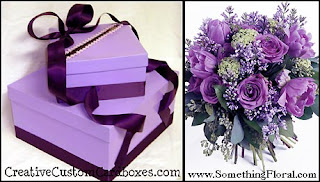The carnation's botanical name is Dianthus caryophyllus, which when translated, means "flower of love" or "flower of the gods" depending upon the source. There are many meanings for carnations, but the most widely accepted are fascination, distinction, and love.
There are approximately 300 species in the Dianthus genus. Stems with a single large bloom are called standard carnations. Spray carnations, also called minis, bear several smaller blooms on each stem. Carnations are native to the Eastern Hemisphere, and they are found naturally in the Mediterranean region.
Most commonly seen in pinks, reds, and whites, carnations are also available in yellow, peach, purple, lavender, green, and bi-color varieties. They can also be dyed or tinted to match any color scheme. Because of their beautiful texture, pleasant scent, heartiness, and affordability, carnations are among the most popular cut flowers requested and used for corsages and boutonnieres.

Carnations are very durable and long-lasting, and we especially like to use them massed together to create uniquely-shaped designs items. We frequently use carnations for pomanders and kissing balls, floral initials, and flower girl scepters.
While carnations have lost some popularity as wedding and special event flowers over the past 10 years, the key to keeping carnation designs modern and in-fashion is to select one or more of the newer color varieties, such as vibrant purples and lavenders, developed in recent years or use them as the one and only botanical variety in mass designs.
Carnations can mix beautifully with other larger-bloomed garden flowers, but they look dated when paired with baby's breath (gypsophila) or other tiny bloomed, "filler" flowers.

Advantages of using carnations in wedding/special event flowers:
• Low cost for relatively large size blooms
• Longevity. Carnations will last nearly twice as long as nearly any cut flower, typically ranging from 6-14 days depending on variety.
• Fairly tolerant of heat so they work well for summer or warm climate weddings/events
• Available from florists year-round • Hearty, durable flower that can be used in a variety of designs • Can be dyed or tinted to any color
• Their unique texture add extra dimension to bouquets and other floral designs
Interesting facts about the carnation:
• The birth flower for January
• A scarlet carnation was designated as the state flower of Ohio in 1904
• It is the national flower of Spain and the provincial flower of the Balearic Islands
• Its history dates back to ancient Greek and Roman times when the flower was used in art and décor
• Carnations were known as "Jove's Flower" in ancient Rome as a tribute to one of their beloved gods
• Carnations were one of the flowers used in Greek ceremonial crowns, and some scholars believe the name "carnation" comes from "coronation" or "corone" (flower garlands)
• The founder of Mother's Day, Anna Jarvis, used carnations at the first Mother's Day celebration because they were her mother's favorite flower
• In the early part of the 20th century, carnations became the official flower of Mother's Day.
• In many parts of the world, carnations are more popular than any other variety of flowers, including roses




 The third card box is a pretty blush pink highlighted with creamy satin ribbon. This looks lovely coupled with a blush pink, cream, ivory, and white bridal bouquet of roses, peonies, tuberose, and stephanotis.
The third card box is a pretty blush pink highlighted with creamy satin ribbon. This looks lovely coupled with a blush pink, cream, ivory, and white bridal bouquet of roses, peonies, tuberose, and stephanotis.
 A classic white and ivory bridal bouquet gets a modern twist with an updated silhouette and pearl detailing. Notice how the pearl details on the coordinating white and ivory card box reinforces the classic elegance of an all-white wedding.
A classic white and ivory bridal bouquet gets a modern twist with an updated silhouette and pearl detailing. Notice how the pearl details on the coordinating white and ivory card box reinforces the classic elegance of an all-white wedding.


